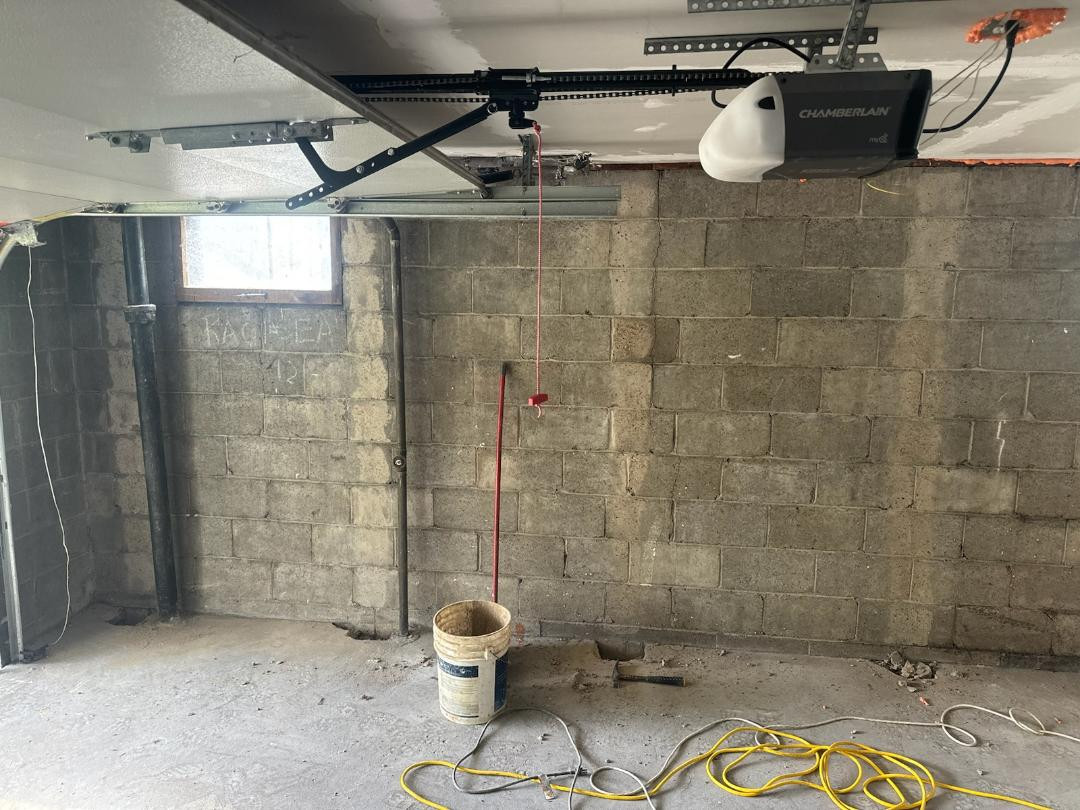If you’ve noticed a crack in your basement wall, your first instinct might be to shrug it off—especially if it’s small. But here’s the truth: even the tiniest crack can be a symptom of a much bigger problem. Left unchecked, what starts as a hairline fracture can evolve into severe foundation damage, water intrusion, and safety risks.
In this article, we’ll explore what causes basement wall cracks, how to distinguish between cosmetic and structural concerns, and why addressing these issues early can save you thousands of repairs.
1. Why Basement Walls Crack in the First Place
Your foundation is under constant pressure—from the weight of your home above and the shifting soils below. Over time, several factors can lead to wall cracks, including:
 Hydrostatic pressure: Water buildup around the foundation pushes inward on the walls.
Hydrostatic pressure: Water buildup around the foundation pushes inward on the walls.Soil movement: Expansive clay soils expand and contract with moisture changes, shifting the foundation.
Poor construction or settling: Improper foundation installation or natural settling over time.
Tree roots and landscaping issues: Large roots or poor drainage can cause uneven pressure on basement walls.
Freezing and thawing cycles: Temperature fluctuations can expand and contract materials, causing cracks.
2. Types of Basement Wall Cracks—and What They Mean
Not all cracks are created equal. Here’s how to identify the most common types:
?? Hairline Cracks
These are thin, surface-level cracks, often due to curing concrete. They’re typically not structural, but they can widen over time and allow moisture in.
?? Vertical Cracks
Often caused by settling, these cracks are the most common and least dangerous—but they should still be monitored and sealed to prevent leaks.
?? Horizontal Cracks
These are a serious red flag. Horizontal cracks often signal excessive hydrostatic pressure, which can cause basement walls to bow inward or even collapse.
?? Diagonal Cracks
Usually caused by uneven settling or shifting soils. These can start small but quickly become structural concerns.
?? Stair-Step Cracks in Block Walls
Seen in cinder blocks or brick foundations, these indicate movement and are usually structural. If they grow or leak, professional repair is essential.
3. What Happens When You Ignore the Warning Signs
Putting off foundation wall crack repair might seem harmless—until the consequences catch up. Here’s what’s at stake:
? Water Intrusion
Cracks provide a direct path for water to enter your basement. Even tiny openings can let in moisture, leading to damp walls, mold growth, and a musty smell.
? Mold and Mildew
Once water enters through cracks, the environment becomes ideal for mold. This doesn’t just damage materials—it poses health risks, especially for people with allergies or respiratory issues.
? Structural Instability
Widening or shifting cracks can weaken your foundation. Sagging floors, sticking doors and windows, or leaning walls are signs of a bigger structural issue.
? Lower Property Value
A cracked basement wall can be a dealbreaker for potential buyers. Unresolved foundation issues signal neglect and may make your home harder to sell.
? Costlier Repairs Later
What could have been sealed early for a few hundred dollars might require foundation underpinning, wall anchors, or carbon fiber reinforcement later on—adding up to thousands in repair costs.
4. DIY Repairs vs. Professional Assessment
Some homeowners reach for DIY crack sealers or patch kits—but that’s often just a temporary fix. The real issue isn’t the crack itself—it’s what caused it.
A professional foundation contractor can:
Determine whether the crack is structural or cosmetic
Measure crack movement over time
Use industrial-grade materials for a long-lasting repair
Recommend drainage or waterproofing solutions if moisture is involved
Trying to fix the problem without understanding the root cause often leads to repeat issues—and more expensive solutions later.
5. Proven Repair Methods That Get Results
Depending on the severity and cause of the crack, professionals may recommend:
Epoxy Injection: For narrow cracks, epoxy fills and seals the crack, restoring wall strength.
Polyurethane Foam Injection: Great for waterproofing; foam expands to fill cracks and stop leaks.
Carbon Fiber Straps: Used to reinforce walls and prevent bowing in block or poured concrete walls.
Steel I-Beams or Wall Anchors: Reinforce walls showing signs of movement or bowing.
Interior/Exterior Waterproofing: Paired with crack repair to stop future water intrusion.
6. The Importance of Acting Early
Foundation damage is one of those problems that gets worse with time. Cracks don’t usually heal themselves—and soil pressure, water, and freeze-thaw cycles will continue to apply stress.
The earlier you intervene, the more options (and cost savings) you’ll have. Catching a problem while it’s still small may only require sealing or minor reinforcement, while delayed action could mean major reconstruction.
7. Know When to Call the Pros
If you notice any of the following, don’t wait:

Cracks wider than 1/8 inch
New or worsening cracks
Horizontal or stair-step cracks
Water seepage during rainstorms
Musty odors or visible mold
Uneven floors or stuck doors
These signs indicate it’s time for a professional foundation inspection. Waiting it out could cost you much more in the long run.
Conclusion: Protect Your Investment Before It Crumbles
Basement wall cracks might seem like a minor issue—but they can point to deeper problems with your home’s foundation. Whether you’re seeing thin lines or shifting blocks, taking action early is your best defense against water damage, mold, and costly structural repairs.
Trust the professionals to evaluate and repair your basement walls properly, using proven methods and long-lasting materials to ensure your home stays safe, dry, and structurally sound.








